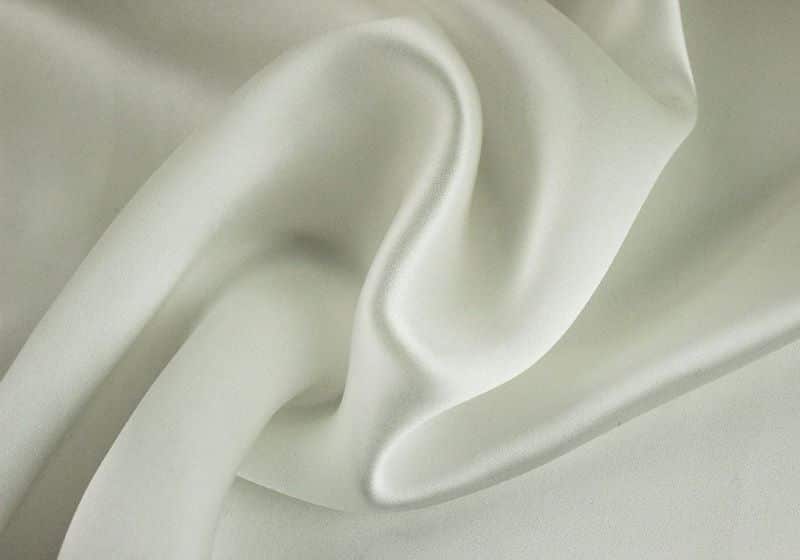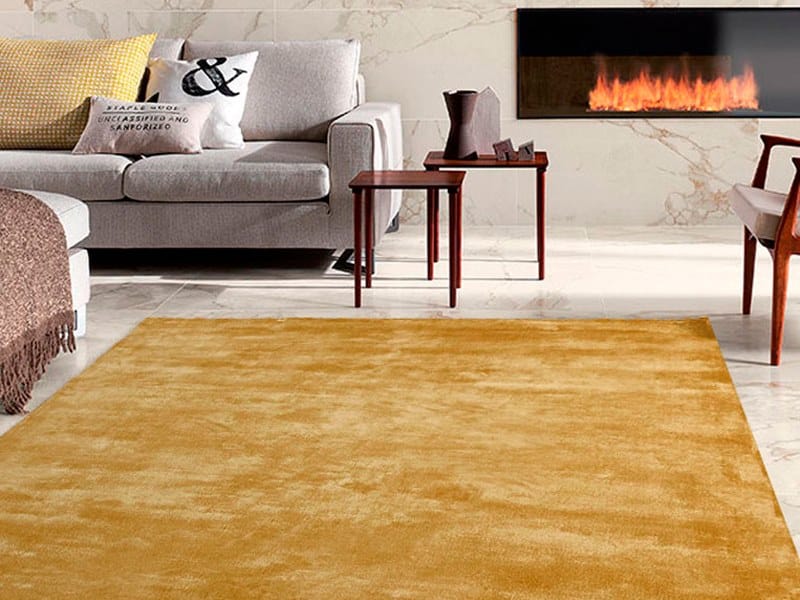Viscose Rugs
View our modern selection of viscose rugs:
Everything You Want to Know About Versatile Viscose Rugs
What is viscose?
Viscose, the silk-like material itself, is created by treating cellulose with sodium hydroxide and carbon disulfide. It is a semi-synthetic rayon fabric (*Rayon is a textile fiber / fabric that is created from regenerated cellulose), that is created from wood pulp. Since viscose has a silk feel and is much cheaper than real silk, it is used as a silk substitute. Funnily enough, viscose rugs can get you a whiter white than natural silk. In addition, it also has a shinier look and visual impact than real silk does.
If the mere utterance of the word “viscose” is enough to elicit controversy in your circle, it’s important to understand that for everyone who hates it, there are plenty of others who embrace it. There are actually people who would only buys rugs that were made using viscose. That is good news for manufacturers who are increasing the number of viscose rugs on today’s market.
Nazmiyal offers you both sides of this controversial topic so you can make an informed decision about it once you read more about the performance characteristics that make it either ideal or unsuited for use. Don’t be surprised if, by the time you finish reading this, you are of the opinion that viscose is the ultimate carpet choice.
Viscose: The Most Versatile Fiber of All
Like Bamboo Silk and Banana Silk, viscose is sought after for its genuine silk like qualities, viscose is a versatile fiber that is often compared to natural fibers because it is equally comfortable and sturdy. Viscose can imitate the look and texture of wool, cotton, linen, and especially silk. It is easy to dye and since it doesn’t retain heat, viscose is cool to the touch.
What is viscose used for on today’s decorating and fashion scenes? A better question may be, “What can’t it be used for?” Consumers discover viscose content in a wide range of consumer products that run the gamut from fashion and personal care products to interiors, but viscose fiber is most often used to make rugs and carpets.

Viscose is used for many products such as clothing, bedsheets, and personal care wipes.
Viscose Use Expands Over Time
Viscose’s usage has greatly increased since 2008 and viscose rugs are currently considered the third most common material used in hand-knotted rugs. Manufacturers are promising an increase in production in the future for good reason: New techniques for producing products with viscose are on the rise.
You’ll find machine-made, hand-loomed, tufted and hand-knotted products available for sale and this trend is expected to continue. For discriminating consumers in search of unique piles, patterns, and designs, viscose rugs and carpets do not disappoint. Further, when shoppers realize that they don’t have to pay a premium price to own the rug of their dreams, they can become viscose fans on the spot.
It’s Getting Harder to Identify Viscose vs Silk
Can you accurately compare viscose to 100-percent natural silk carpet? While the two may look and feel identical, the price tags tell the true story. According to carpet professional estimates, shoppers can expect to pay around 1/6th of the amount of an all-natural silk rug for one made of viscose, though grade differentials can increase or decrease that estimate.
Because methods of manufacture and viscose fiber are constantly being improved, it has become easier than ever to substitute it for silk, whether as an accent, highlight, or the primary fiber from which the textile is constructed. In fact, unless one is an expert, it can often be hard to differentiate a viscose carpet from one that is woven of silk, but of course, that price tag will usually tell the tale.

Viscose often appears very similar to silk.
Affordability Isn’t Always a Sales Driver Of Viscose Rugs
In our experience, the question of whether someone can afford or not afford natural fiber goods versus those made of viscose has nothing to do with price these days. Plenty of people who can afford a pricier item choose to go with viscose rugs. It is true that the occasional customer complains about the price of carpet no matter what it is. But for budget setters unwilling to exceed a limit (especially today’s consumer), it often turns out that the determinant is surprisingly more about aesthetics rather than intrinsic qualities associated with traditional materials.
In fact, there are physical characteristics found in viscose yarns that are so close to their natural counterparts, they can literally be dyed side-by-side. As a result of that process, it can be even harder to differentiate them from each other. In sum, manufacturing methods and customer taste and budgets all factor into decisions shoppers make when buying a product like carpet. It’s becoming increasingly common for people to dismiss preconceived notions about viscose when they make a final purchasing decision.
Viscose: Dyeing to Be Gorgeous
Does every manufacturer apply due diligence when dyeing fibers for weaving viscose rugs? The answer is no. We have found that some don’t differentiate yarns and consequently, they wind up with poor quality goods because they haven’t mastered the art of thoroughly setting dyes, running / bleeding colors and crocking dyes, and giving yarn short shrift that can lead to poor workmanship.
The bottom line is that viscose dyes beautifully, producing yarns in a rainbow of rich, vivid colors and that factor is the reason it has become more than just an acceptable visual substitute for the more expensive silk. Today’s fiber technology is showcased in every example of viscose artistry, which is why it is becoming more and more commonplace to use it in lieu of pricier yarns.
Expect Long Life and Artistry with Viscose
While some people will always opt for aesthetics over performance and longevity, viscose’s durability and performance are winning over shoppers daily. Viscose is durable and it cleans like a charm. Over time, it’s appearance ages like a fine wine, especially when compared to natural counterparts like wool and silk that can deteriorate when exposed to too much sun. Further, because this yarn originates in cellulose, it exhibits the lowest elastic recovery rate among fibers.
While following American Fiber Manufacturer care recommendations that “most viscose fabrics and yarns should be dry-cleaned,” that does not mean that every carpet is a dry-clean candidate. Some viscose floor coverings can be wet washed, which is why following the instructions on carpet labels is critical. Ignore this advice and you risk shrinkage, discoloration, or stains that can ruin your expensive investment.

Cellulose fiber, which is turned into viscose.
Viscose Belongs Everywhere
As time passes and viscose becomes a more acceptable, if not preferred, type of carpet for all of the aforementioned reasons, it is still likely that there will be some resistance by industry professionals (such as salesmen, designers, and decorators) whose preference for natural materials impacts their attitudes. In the end, not every person is going to be convinced of the superiority of viscose, though future iterations of this material may change those attitudes.
Further, a rarely-mentioned environmental factor could impact viscose yarns down the road: Since viscose can be regenerated from any source of cellulose, manufacturers will seek to find new, plant-based sources that are both sustainable and affordable. The ability of bamboo, for example, to create viscose, could be a game changer. It grows prolifically and with little effort, it is fast becoming a favorite viscose resource. Look for more rugs and carpets bearing a “viscose from bamboo” label in the future.

An example of a viscose rug in a room setting.
Common Questions About Viscose Rugs
How do viscose rugs perform in a high-traffic setting? Viscose rugs have a high crush / mat factor. They are not suitable for high traffic applications. They are more effective in living room or bedroom environments. How long do they last if taken care of? To care for a viscose fiber is similar to caring for silk. The fiber will discolor if any liquid is spilt, including water. If liquids are spilt, the quicker the blotting and drying times, the better the results. To spot clean, you need to use a dry solvent. No kids and accidental spills as well as no pets with urine stains are two very big positives. As mentioned previously, matting of the fibers may occur and regular professional cleaning may be necessary to restore the fibers original luster.
Vacuum cleaner on a low setting is recommended for maintenance, but over time will this impact the look of the rug? Regular vacuuming will get the majority of the dust and hard spills. No beater bar should be used, as it is too aggressive. Viscose is a thin staple fiber, so some pulls may occur. These would need to be trimmed to the carpet’s surface.
How does viscose handle exposure to sunlight? As with any fiber, it will fade due to natural sunlight. Even the fabrics within the upholstery will fade. Rotating the carpet will ensure even fading.
Viscose is a price driven substitute for real silk. It can be dyed with brighter colors and a “whiter” white as compared to real silk. The sheen, coolness to the touch and value make them attractive floor coverings. But with these positive attributes, one needs to be aware that it is a more delicate and less serviceable fiber. A fiber protectant like “Fiber Shield” or “Fiber Seal” would assist with protecting the carpet and extending the look.
A Final Word on Viscose Rugs
What does all of this mean to consumers when they shop for viscose rugs? Just as there are varying qualities of wool or silk, so too are varying qualities of viscose on today’s market, thus performance characteristics are of the utmost importance. Just as a reputable dealer would not suggest a wool, hand-knotted rug at an airport, so too are there situations in which viscose is inappropriate, yet that reality does not mean that viscose won’t remain an excellent alternative for those who cannot afford or justify the cost of silk.
Viscose is a great material in situations wherein the rug or carpet will be replaced in comparably short order due to shifting design and aesthetic concerns and/or where a customer will only commit, for all of the reasons stated above, to a budget that precludes silk. This is simply a balance of concerns and resources. At the same time, salespeople, websites, designers — anyone really — who is committed to selling viscose carpet should be honest about its composition, caveats, and benefits, so the consumer can make an educated purchasing decision.
